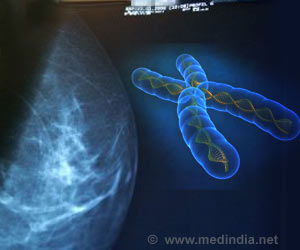The cosmetic results after lumpectomy for breast cancer differ for African-American versus Caucasian women, as perceived by both patients and doctors.

Despite similar results on objective assessments, "It appears that there is a difference in the perception of cosmetic outcomes between Caucasian and African-American patients," according to the study led by ASPS Member Surgeon Dr. Robert D. Galiano of Northwestern University Feinberg School of Medicine. They call for further studies using validated assessment tools to help in optimizing breast appearance for women undergoing breast-conserving therapy (BCT).
Study Finds Similar Objective Outcomes By Race… The pilot study included 21 women undergoing BCT for breast cancer: 10 African-American and 11 Caucasian women. Breast-conserving therapy combines lumpectomy or other limited surgery, as an alternative to mastectomy. Surgery is typically followed by radiation therapy to reduce the risk of recurrent breast cancer.
All women underwent detailed, "multimodal" assessments of their cosmetic outcomes. This included objective measurements of breast volume and symmetry, based on three-dimensional photographic analysis.
In addition, a newly developed questionnaire was used for subjective ratings of the cosmetic outcomes after BCT. Independent rankings of the appearance of the nipple, overall breast shape, scarring, and skin were made by the patients as well as by a plastic surgeon, a breast oncologic surgeon, and a trained research assistant.
All objective measurements were similar between groups. The average volume of the breast undergoing lumpectomy was somewhat smaller (by about 100 cc) than that in the untreated breast, with no significant difference between African-American versus Caucasian patients.
Advertisement
Nipple appearance and breast shape ratings were fairly consistent between patients and various health care professionals. However, there was wider variation when it came to scar appearance ratings.
Advertisement
However, these studies have been limited by the lack of validated techniques for assessing breast appearance. If factors affecting the cosmetic outcomes of BCT can be established, it may be possible to tailor treatment approaches to achieve the best possible breast appearance while still providing effective control of breast cancer.
The new study shows similar objective outcomes for African American and Caucasian women undergoing BCT. However, it also finds lower subjective ratings of breast appearance for African-American patients. The researchers discuss the reasons for the racial differences, including a possible "psychological component."
The disagreement in scar ratings could reflect a higher rate of physical reactions to radiation therapy in African-American patients, which may be related to genetic factors. Dr. Galiano and coauthors conclude, "The novel techniques of cosmetic evaluation used in this study show promise towards identifying variables that can affect cosmetic outcome following BCT."
Source-Eurekalert












